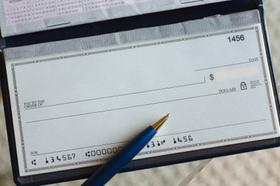Paying for Private School in 2025: A Practical Guide for Families
Private schools offer strong academics, diverse programming, and supportive learning environments, but paying for private school requires thoughtful strategy. In 2025, tuition trends, financial aid policies, and education savings programs look different than they did even a few years ago. This updated guide outlines what families can expect and how they can make informed financial decisions.
1. Understanding 2025 Tuition Trends
The national average private school tuition for the 2025–26 academic year is approximately $15,000. Elementary schools generally fall just below this figure, while high schools trend toward $18,000.
Some regions remain significantly more expensive. Many independent day schools in major metro areas report tuition between $30,000 and $50,000, and boarding schools often exceed $70,000. According to recent reporting from The Wall Street Journal, inflation, faculty compensation, and expanded student services continue to drive tuition higher across independent schools.
Although costs are rising, many schools have expanded financial aid budgets to remain accessible to a broad range of families.
2. Private School Enrollment and Demographic Shifts
Roughly 4.7 million students currently attend private schools across the United States. Enrollment has remained relatively stable since 2020, though regional fluctuations continue, especially in urban centers with shifting population patterns.
More families are also applying to private schools earlier. Schools report that parents of preschool and elementary-aged children are increasingly seeking small class sizes, specialized programs, and structured learning environments. These demographic shifts influence financial aid allocation, since schools aim to balance enrollment across income groups, ages, and grade levels.
3. Financial Aid Options in 2025
Financial aid is the foundation of many families’ strategies for paying for private school. While each school sets its own policies, several aid types are widely available.
Need-Based Tuition Assistance
Most private schools use a need-analysis service or in-house assessment to evaluate a family’s financial picture. Schools typically consider income, assets, debt, family size, and educational expenses.
Key insights for 2025:
A significant percentage of private schools now offer sliding-scale tuition, which aligns tuition with a family’s ability to pay.
Financial aid budgets have increased at many K–12 schools. More institutions are committing 15–25 percent of their annual operating budgets to aid.
Transparent documentation is essential. Aid directors consistently emphasize the importance of accurate income and asset reporting.
Families researching specific tuition and aid profiles can explore school data at PrivateSchoolReview.com.
Merit-Based Scholarships
Although less common than need-based aid, merit scholarships support students with exceptional academic, artistic, athletic, or leadership talent. Competition is rigorous, and award structures vary widely.
Schools offering merit awards generally require additional applications, portfolio submissions, or auditions. Merit scholarships are often renewable if students maintain certain performance standards.
4. State Programs, Savings Plans, and Tax Benefits
Families increasingly blend traditional financial aid with tax-advantaged tools and state-supported programs.
529 Savings Plans
Many states now allow 529 plan withdrawals for K–12 tuition, although annual limits vary. Families should review their state's rules carefully, especially regarding tax deductions or credits tied to 529 contributions.
Education Savings Accounts (ESAs)
ESAs give parents state-funded dollars to use for approved educational expenses, including private school tuition. States such as Arizona and Florida have expanded ESA eligibility to larger portions of the population.
These programs can significantly reduce the cost of private school, but they also evolve quickly through legislative changes. Families should monitor updates annually.
Tuition Payment Plans
Most private schools now offer zero- or low-fee monthly payment plans. These plans help families avoid large upfront lump-sum payments and spread expenses over ten or twelve months. For families on fixed incomes, payment plans can be an essential budgeting tool.
Education Loans
Private K–12 education loans are available but should be approached cautiously. Interest rates vary, and borrowing for elementary or high school can affect long-term financial planning. Experts recommend prioritizing scholarships, savings plans, and aid before considering loans.
5. Real-World Budgeting Example
A family in the Midwest with two children attending a day school with tuition near $20,000 per student combined several tools to make private school workable:
They received need-based tuition assistance covering 30 percent.
They used a 529 plan for part of their remaining tuition.
They enrolled in a 12-month payment plan to smooth out expenses across the year.
This layered approach allowed them to manage tuition without relying on high-interest loans.
6. Expert Insights and Advice
“Families often underestimate how many funding sources they can combine. Aid, savings, and tax-advantaged programs can stack together.”
— Director of Financial Aid, Independent School Midwest Region
“Applying early remains the golden rule. Many schools commit over half their aid budgets by late winter.”
— Admissions Consultant, National Association of Independent Schools
A growing number of parents also consult financial planners who specialize in education funding. These experts help families maximize tax benefits, manage cash flow, and plan long-term strategies.
7. Risks and Considerations
Before committing to private school, families should weigh several financial considerations.
Tuition Increases
Most schools raise tuition annually, typically between 3 and 6 percent. Budget projections should account for increases over multiple years.
Aid Variability
Financial aid is not guaranteed from year to year. Families experiencing income changes must report them and may see adjustments in award amounts.
Legislative Uncertainty
State ESA and tax-credit scholarship programs can change with new laws. Families relying on these benefits should have backup plans.
Long-Term Financial Health
Experts note that private school should not jeopardize college savings, retirement, or emergency funds. A sustainable financial plan protects both parents and children.
8. Making Private Education Affordable
Paying for private school in 2025 is more manageable when families use a combination of strategies. Practical steps include:
Researching each school’s financial aid policies
Applying early for need-based and merit-based programs
Leveraging ESAs, 529 plans, and tax-advantaged tools
Using payment plans to manage monthly cash flow
Staying informed about state-level education reforms
Families exploring individual schools can compare tuition, financial aid policies, and enrollment data at BoardingSchoolReview.com or Private School Review.
Educational costs will continue to evolve, but with informed planning, private school can remain an attainable and rewarding option for many families.







-4c3194pi4wis8gsg004w0g44w-280.jpg)






